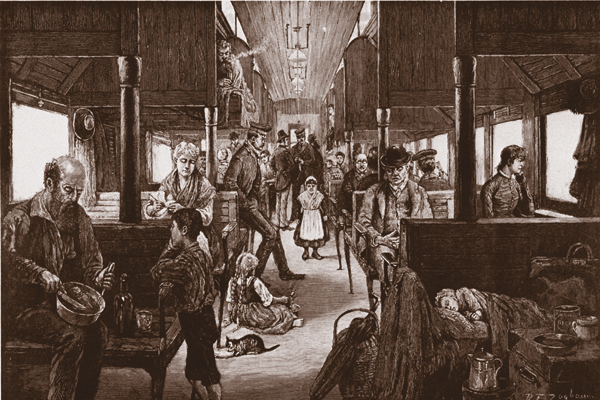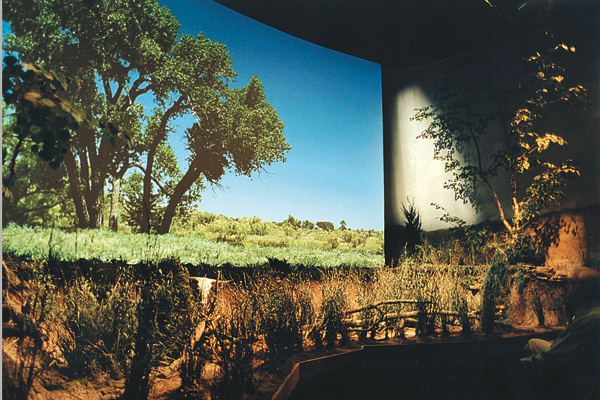 In the 1830s, Davy Crockett opened a window aboard a train, which was a serious taboo because sparks from the smokestack could blow inside and cause a fire.
In the 1830s, Davy Crockett opened a window aboard a train, which was a serious taboo because sparks from the smokestack could blow inside and cause a fire.
But Crockett justified his action by saying, “I can only judge of the speed by putting my head out to spit, which I did, and overtook it so quick, that it hit me smack in the face.”
Tobacco-chewing passengers usually spat in the center aisle. The practice was an uncomfortable one, however, as early passenger cars were modeled on stagecoaches and people were crammed together, two to a seat on either side of the aisle.
Making the Grade
Following the Civil War, train travel became more palatable. George Pullman’s “Pioneer” car, used for President Abraham Lincoln’s funeral train, contained fine carved woodwork, thick carpets and mirrors.
In 1866, The Chicago Tribune carried reports of the Great Railway Excursion, a public relations trip sponsored by the Union Pacific Railroad to celebrate its track reaching the 100th meridian, 247 miles west of Omaha, Nebraska. About 140 excursionists traveled on “one of the most magnificent [trains] ever sent out of Chicago,” which included three $20,000 Pullman sleepers decorated with fresh flowers, a dining car and a day car, elegantly designed with silver, mirrors, inlaid woods and fine upholstery.
On Track with the “Silver Palace”
Well-traveled Englishwoman Isabella Bird journeyed from San Francisco, California, to Estes Park, Colorado, in 1873, describing the train she rode across the Sierra Nevada Mountains in her 1879 book, A Lady’s Life in the Rocky Mountains, as being about 700 feet long and consisting of two engines, tenders filled with wood, baggage car, two produce cars carrying grapes and peaches, two sleepers, a smoking car and five regular passenger cars.
In the “Silver Palace” sleeper car, her berth consisted of “a luxurious bed three and a half feet wide, with a hair mattress on springs, fine linen sheets, and costly California blankets.” The car was kept at an even 70 degrees, traveled at approximately 18 miles per hour and held 24 passengers, who were separated by heavy curtains of “green and crimson, striped with gold.”
Near Sherman Hill, Wyoming Territory, the highest point on the railroad at 8,242 feet, boys walked through the cars, hawking “newspapers, novels, cacti, lollypops, popcorn, peanuts, and ivory ornaments.”
All Steamed Up
According to John Stover’s American Railroads, early passenger fares ranged from 2.5 to 5 cents per mile. By 1886, when railroads engaged in rate cutting and more travelers journeyed by rail, a ticket from New York to California cost $29.50.
In some passenger cars, kerosene lamps replaced candles, while others had electric lighting by the late 1880s. Even though most cars had stoves, passengers complained of being cold in winter and warm in summer. By 1881, steam heat piped from the locomotive helped provide more even temperatures in cold weather.
Another improvement of the late 1880s was the vestibule. The enclosed passageway between cars allowed travelers to walk from the parlor cars or smoking cars to the dining car without fear of being blown off the train.
While accommodations were frequently spartan rather than elegant, passengers found that riding the rails became safer and more comfortable over time, but the train’s main attraction was, as Davy Crockett noted, the convenience of speedier travel.
Lori Van Pelt is the author of Capital Characters of Old Cheyenne, the second book in her Dreamers and Schemers series.






